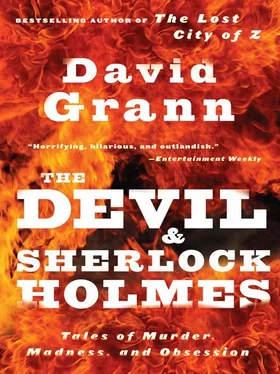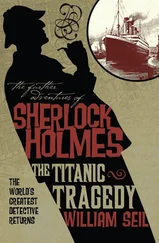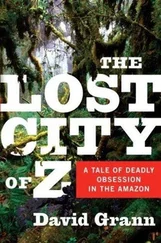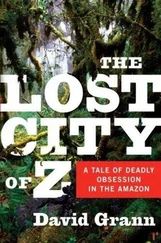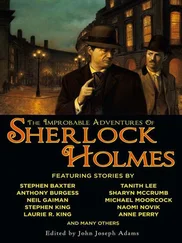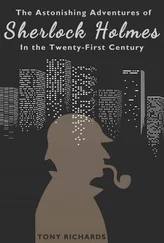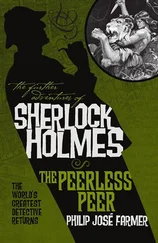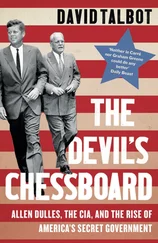The men split into two groups and went to opposite ends of the tunnel, where they began painting detailed patterns on the rock face. Moving out from the center of the rock, they carefully dabbed white dots about three feet apart, forming an elaborate grid. Then the sandhogs mounted hydraulic drills and bored a ten-foot-deep hole into each mark, their arms and legs rattling up and down, the lamps on their hard hats shaking.
As the men prepared the rock face, listening to each echo for any sign of danger, they spoke in a private language: a jackhammer was known as a “jackleg”; a bucket, a “battleship”; the Nerf-like sponge used to clean a pipe was called a “rabbit.” Sometimes, because of the noise, the men would simply draw images in the air, like mimes. After a while, they took out blowpipes, which blasted air and water into the holes, washing away the dirt. “Everything has to be done just right,” Ryan told me.
With his knife, he opened one of the boxes of explosives. Inside were dozens of red sticks of dynamite. The men packed the sticks into the holes as if loading muskets. Each piece of dynamite was wired to the next, and soon dozens of cords crisscrossed the rock face. Then the men turned off the lights, one by one, until the tunnel was completely dark, except for a single flashlight that guided us back to the metal cage. “We need to be a thousand feet away,” Ryan said, as we slowly rose to the surface. “It’s not like the old days, when they’d blow the son of a bitch in your ear.”
When we reached the street, the sun was fully in the sky, and Ryan squinted uncomfortably in the light. He leaned over a small detonator while the men cleared the intersection of pedestrians. A woman in a camel coat, who insisted that she was late for work, tried to force her way past. “One minute,” Ryan said, cocking an eyebrow. Another sandhog put his hand on the T-shaped lever. “Now,” Ryan said. The sandhog slammed the lever with both hands, yelling, “Fire in the hole! Fire in the hole!”
There was a great roar, a percussive rumble that grew louder and louder. The sidewalk and fences began to tremble, along with the ground beneath our feet. The crane that was suspended above the hole rattled from side to side. One bystander looked up at the sky, then down at the ground, not sure what was happening. “Is it a bomb?” another asked. A plume of dust rose out of the shaft. Then everything fell silent. The tunnel had advanced another nine feet. “All right, hogs!” the foreman yelled. And, before anyone noticed, Ryan and the other men vanished into the hole.
At the end of the day, the sandhogs congregated in the hog house, a small white shack with wooden benches, lockers, and a shower, inside the fenced area on Thirtieth Street. Yellow slickers, now black with mud, hung from hooks. A television set murmured in the corner, and several men stood around it in towels while another mopped the floor around their feet.
Ryan sat down at a table to talk with me. His elbow rested on his hard hat; a line of mud traced the side of his cheek. He had lost part of his hearing from the constant concussions, and he spoke louder than normal.
“No one wants to talk about it, but we’re flirting with disaster,” he said. The old tunnels, Ryan explained, were leaking “like a sieve”; some of the sections were built nearly a century ago and were in desperate need of repair. But until Tunnel No. 3 is virtually complete there will be no way to fix them. In part, this is because getting inside Tunnel No. 1 or No. 2 would require the city to shut the water off, and without a backup supply there would be serious water shortages. But it was more than that, and, as several sandhogs peered over his shoulder, Ryan started to draw a circle on the table with his muddy finger. “See this?” he asked me. “These are the valves that control the flow of water.”
“They’re hundreds of feet underground,” another sandhog said.
The valves were designed, Ryan said, to open and close guillotine-like gates inside the cylindrical tunnels, stopping the flow of water. But they had become so brittle with age that they were no longer operable. “They’re afraid if they try to shut the valves they won’t be able to turn ’em back on,” Ryan said.
He wiped some mud from his eyes. “Look,” he said. “If one of those tunnels goes, this city will be completely shut down. In some places there won’t be water for anything. Hospitals. Drinking. Fires. It would make September 11th look like nothing.”
Ryan wasn’t the only one who spoke of the tunnel system’s frailties, even if the others did so in slightly less alarming terms. One day in the spring of 2003, I met Christopher Ward, the head of the city’s Department of Environmental Protection, which is responsible for designing and operating the tunnel system. With a broad chest and a blunt, goateed chin, he looks more like a sandhog than like a politician, and has a tendency to lean forward when he speaks, as if about to leap to his feet. “People don’t want to acknowledge it, but the useful life of a tunnel does exist, and at some point it does start to fail,” he said. The metal valves, in particular, degrade until they can no longer withstand the pressure. Ward said that the original two tunnels were so dilapidated that it was too risky to try to shut off the water and repair them until City Tunnel No. 3 was operational. He added that there is still time before the aging tunnels collapse—“We’re not talking about today or tomorrow”—though it is impossible to predict how much.
Others are more pessimistic. One D.E.P. scientist told me, “Some of the aqueducts are already hemorrhaging water badly,” while a 2003 study by Riverkeeper, an environmental organization, concluded, “In some cases, this extraordinary infrastructure is literally crumbling.” Upstate, in the industrial town of Newburgh, for example, water has begun to pour out of cracks in the underground aqueduct that feeds into the city tunnels—so much that the leaks have created a giant sinkhole.
Many experts worry that the old tunnel system could collapse all at once. “Engineers will tell you if it fails it will not fail incrementally,” said Ward. “It will fail catastrophically.” If City Tunnel No. 1, which is considered the most vulnerable, caved in, all of lower Manhattan and downtown Brooklyn, as well as parts of the Bronx, would lose its water supply. If the aqueducts gave out, the entire city would be cut off. “There would be no water,” Ward told me. “These fixes aren’t a day or two. You’re talking about two to three years.”
In the past, the city sometimes tried to assuage concerns about New York’s water system, but Mayor Michael Bloomberg noted at a 2003 press conference that the aging pipelines were “very vulnerable” and that “this city could be brought to its knees if one of the aqueducts collapsed.” Anthony DelVescovo, the project manager who has been working on City Tunnel No. 3 for nearly fifteen years, echoed Bloomberg’s warning. “What no one knows is that we’re facing a potential apocalypse,” he told me. “It’s a race against the clock.”
It is hard to imagine a city without water, its faucets empty, its hydrants dry, its plazas filled not with fountains but with citizens suffering from diseases spread by dirt and desiccation—to imagine, as Charles Einstein put it in the title of his 1964 futuristic novel, “The Day New York Went Dry.”
For much of its history, however, New York was a parched city. Though surrounded by the sea, its principal supply of freshwater remained, as late as the eighteenth century, a single fetid pool in lower Manhattan called the Collect Pond. Human waste was dumped into it, along with the occasional dead body. Distribution of water was dominated by racketeers known as teamen, who roamed the streets with giant casks, gouging customers. In 1785, with the city’s population reaching nearly thirty thousand, the New York Journal published an open letter to government officials complaining that the water supply had become a “common sewer.” One daily newspaper declared that it was “sickly and nauseating,” adding, “The larger the city grows, the worse this evil will be.”
Читать дальше
